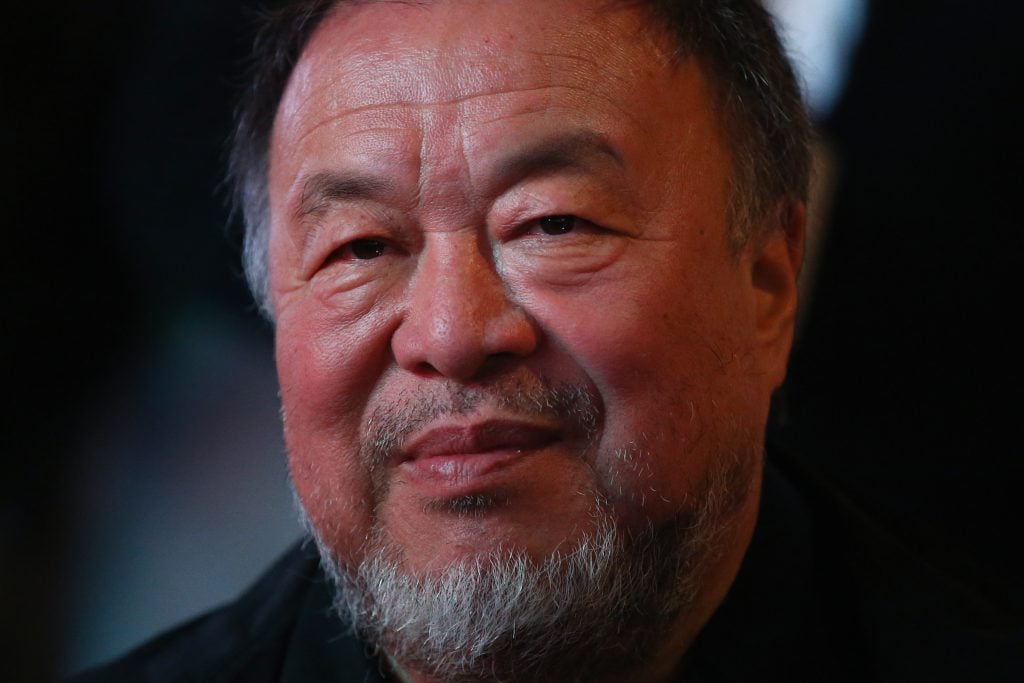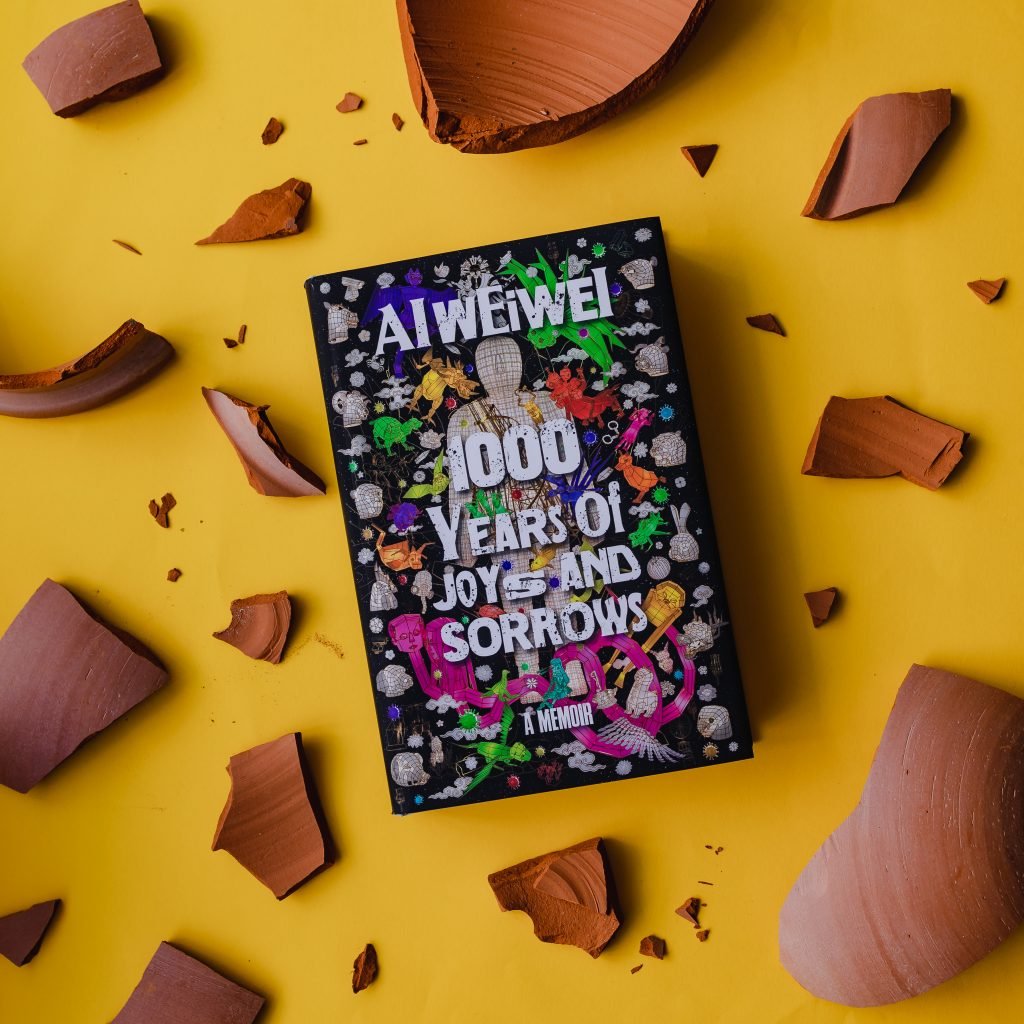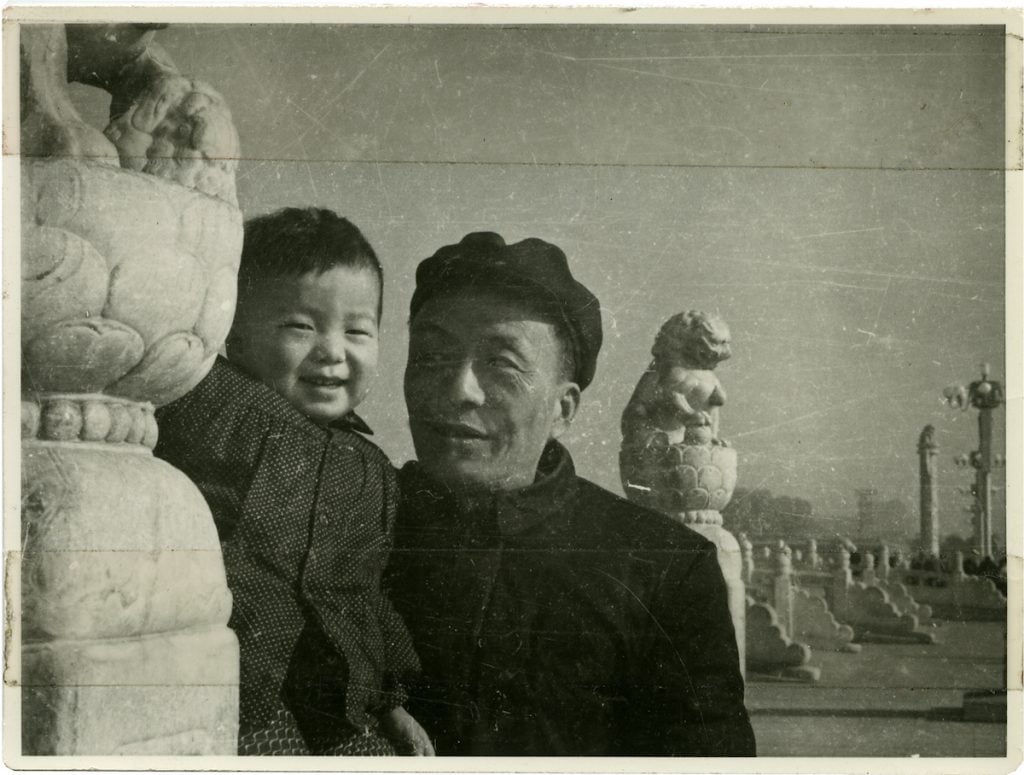Books
We Asked Ai Weiwei to Pick 3 Life-Defining Moments From His Multi-Generational Family Memoir—Preview Them Here
The book tells the story of modern China in one family, says Ai Weiwei.

The book tells the story of modern China in one family, says Ai Weiwei.

Amah-Rose Abrams

Ai Weiwei’s personal views have rarely been out of the news cycle since he decided to protest the working conditions at the Bird’s Nest Stadium in Beijing, ahead of the 2008 Olympic Games. He decided to write his memoirs a year later, although he did not know it would take him a decade to get everything down on paper.
Released on November 2, the finished book, 1000 Years of Joys and Sorrows, is a family history of artistic life in China covering the past century, as told through the experiences of three generations, from the birth of the artist’s father Ai Qing up to Weiwei and his son Lao in the present day. (The book’s publisher, Penguin Random House, are also releasing a collection of Ai Qing’s poems to coincide with the memoirs.)

1000 Years of Joys and Sorrows by Ai Weiwei. Photo: Courtesy Penguin Random House.
Born in 1909, Ai Qing was a poet who fell in and out of favor with the Chinese authorities throughout Weiwei’s life—a pattern mirrored by the artist himself. While Qing became a national hero in China and remained there until his death in 1996, Weiwei now lives in exile between Germany and the U.K.
Artnet News spoke with Ai Weiwei during the launch for his book at Waterstones Piccadilly in London, where he chose and discussed three excerpts from 1000 Years of Joys and Sorrows. Here are the artist’s life-defining moments:

Ai Weiwei with his father Ai Qing at Tiananmen Square, Beijing, China, November 1959. Courtesy of Ai Weiwei.
Father was one of hundreds of passengers who made their way up the gangplank and onto the André Lebon. Once he found a berth in third class, he set down his luggage and art supplies, feeling like a rice weevil packed inside the vessel’s cavernous hold. His cabin was narrow and crowded, the bunks packed close together. Soon the engines began to roar, and heat from the engine room, mixed with the smell of cargo, filled the corridor with a rich aroma. The ship’s horn echoed as father watched the wharf gradually disappear into the distance.
“The book covers the so-called Modern history of China. It is really about my father’s birth in 1910, through to my son’s birth in 2009—99 years later. So one family, three figures,” Ai said. “My father was a poet, he studied in Paris, came back, was immediately put in jail. He stayed there for six years and struggled while the Communists established the new China. Years later he was purged again as an independent writer, and went into exile for 20 years. That takes us up to 1957, the year of my birth, and the story just goes from there.”
In the current climate, every little fiber of their linen covers posed a danger to us. After several home invasions by the Red Guard, Father decided to burn all his books, and I was his helper. We stacked the books up next to a bonfire, and one by one I tore out the pages and tossed them into the fire. Like drowning ghosts, they writhed in the heat and were swallowed by flames. At the moment they turned to ash, a strange force took hold of me. From then on, that force would gradually extend its command of my body and mind, until it matured into a form that even the strongest enemy would find intimidating. It was a commitment to reason, to a sense of beauty– these things are unbending, uncompromising, and any effort to suppress them is bound to provoke resistance.
“There is a very poignant moment when, during the Cultural Revolution, we had to burn our books so we wouldn’t be found with these Western texts about culture; it is a very important moment,” Ai Weiwei said.
This scene was re-created when the artist received the first copy of the memoirs, as documented in a film that was screened at Piccadilly Circus as part of the billboard project Circa.Art.
“The publisher asked me to show them how I felt when I received the book, so I made a little video. You can never really put this feeling into words, it’s just something you have to do,” the artist said. Echoing history, Ai Weiwei took his son Lao into the woods to burn his own books.
“I passed the book to Ai Lao. He looked at it and put some stones or leaves or branches on to make it more ceremonial, and then the pages started to burn, it caught fire by itself,” the artist said. “I like the way that it plays with history.”
I had watched Ai Lao grow up day by day, at the same time hoping he would never grow up, wishing he would always be able to ride on my shoulders as we strolled by the pond, catching dragonflies above the lotus leaves or katydids on the lawn. But at this moment, it was not at all certain I would be able to see them again. Later, in one of our video chats, Ai Lao told me he had put a hammer in the freezer. “It’s a present for you,” he said. “The hammer represents Ai Weiwei. No matter how much hassle he gets from the police, Ai Weiwei is always Ai Weiwei—he’s not going to change. When the ice thaws, the hammer is still the hammer.
“For me, what’s most important is that the book is dedicated to my parents and my son,” Ai Weiwei said. “At the time of my detention [my son] was told I would be away for more than 10 years.”
Struck by the possibility that if this came to pass, Lao could forget him, Weiwei decided then and there to write a memoir.
“I said if I have a chance, I will write down my own record of what happened, so I could pass it on to him, so that if one day he is interested, he can read this,” the artist said. “That’s why I chose to write the book.”